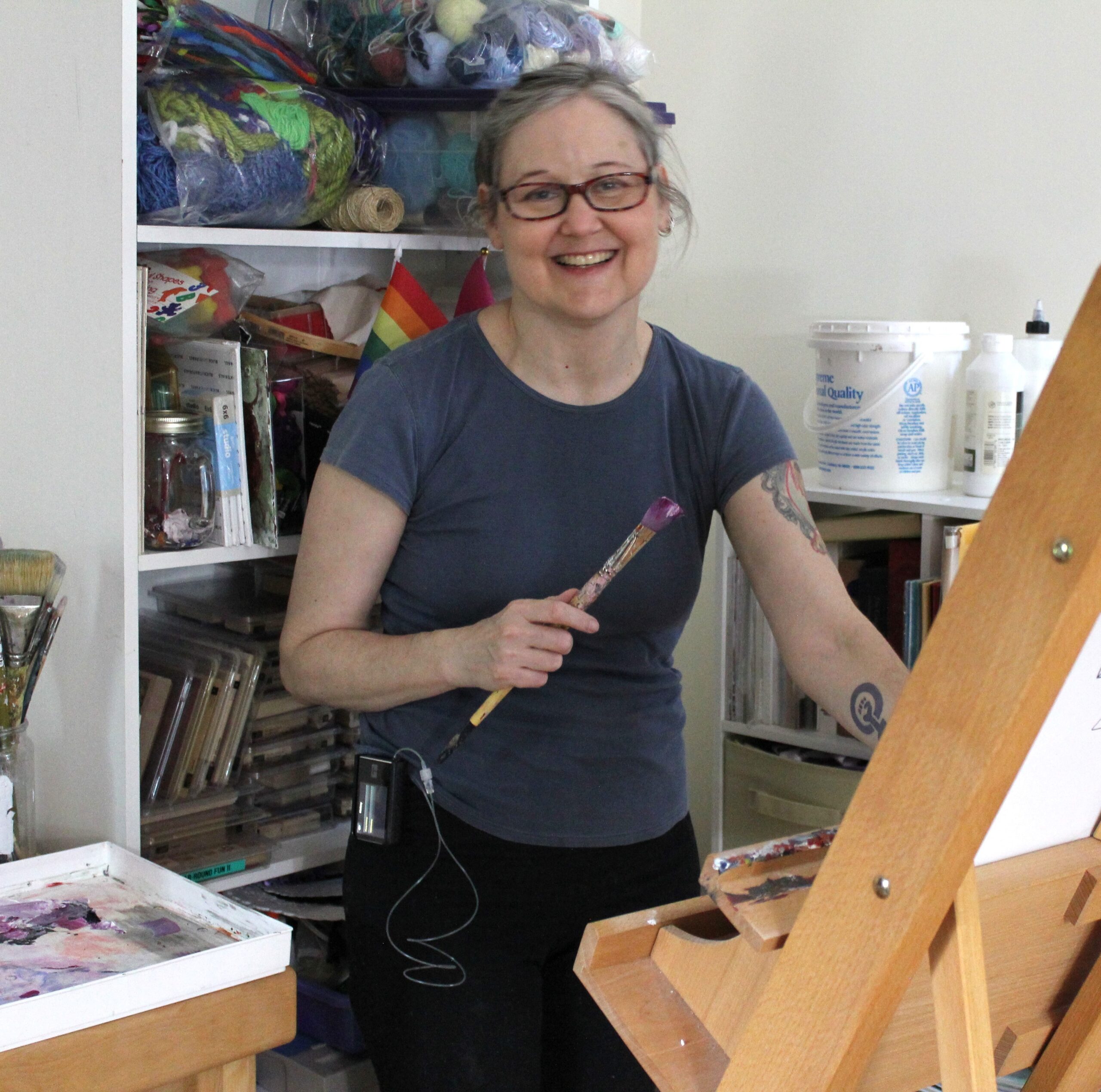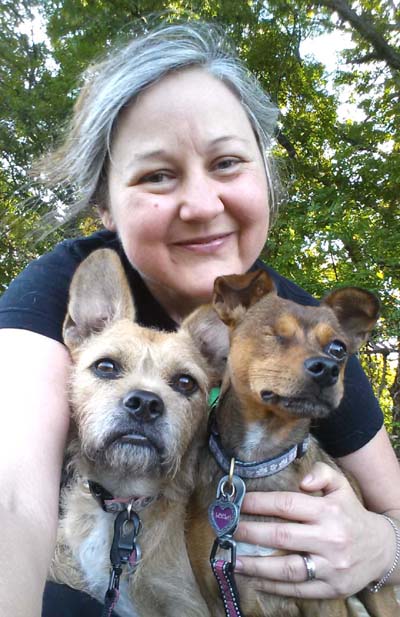About Dr. Lee Ann Thill
Expert care for teens & young adults
Dr. Lee Ann Thill, Art Therapist
In-Person in Gibbsboro, NJ
Virtual in NJ, CT & PA
I’m Lee Ann
I want to help you feel better about yourself and live the life you want – success at school or work, lasting friendships, getting along with your family, actually enjoying your space because you can find the shirt you want to wear and aren’t embarrassed to invite people over – all without changing who you are.
I’m an ADHDer too, so I know the struggle. I also know the right support and strategies can make a real difference, especially when you feel understood and the difficulties you have are taken seriously.
When we work together, I’ll help you get the most out of art therapy. Instead of feeling bad about yourself because you have a million unfinished projects and you’re constantly losing things, you can:
- Use your unique perspective to look at things from different angles, so you figure out what will work for YOU
- Be gentle with yourself because you’re obviously trying, even if other people don’t see that
- See yourself in a new light, confident to ask for what you need – extra time, printed instructions, reminders, or patience and understanding
Less spiraling and frustration so can do what you need to do – finish projects, complete that application, do laundry – so you can enjoy the things you want to do.
Services
ADHD THERAPIST
ART THERAPY
Why art therapy?
Life would be so much easier if ADHD brains came with a pause button. When your brain is going in a million directions, talking about anything that’s really stressing you out can seem impossible because you can’t get your thoughts together.
Art therapy is a way to slow down and step outside your usual thought bubbles by putting those thoughts and feelings into art. When you’re finished and we talk about your art, you don’t have to do as much work trying to explain yourself because I’ll be able to ask you questions based on the art you made.
You can literally step back and look at artwork about the stuff in your head. As we talk about your art, we come to a new, shared understanding. Sometimes this leads to new ideas about dealing with problems, or maybe you start to make sense of whatever you’re dealing with so it isn’t taking up so much space in your head.
One question I often hear is, “What made you decide to be an art therapist?” Art was always my thing. As a kid, I made art whenever I could because it was fun and made me feel good about myself. Also, I didn’t know it at the time, but I had undiagnosed ADHD, and I think focusing on art helped my brain settle down and forget about my worries.
I took all the art classes in high school and then studied art in college. Around that time, I started seeing a therapist, and eventually I was introduced to art therapy. Art therapy was so different from making art on my own, and I was amazed how much it helped me.
After working with a therapist and feeling like myself again, I started thinking about next steps in my life, and decided to go back to school to become an art therapist.
Now, 25+ years later, I get to help people like you, ADHDers who are overwhelmed with demands and expectations, possibly feeling depressed, anxious, or like people don’t get you. We’ll use art therapy to figure out how to work with your brain instead of trying to be something you’re not, so you can more confidently move forward with school, job-career, friends, dating, and being more independent.
Working Together
Being yourself and being open to sharing what you’re dealing with is essential in therapy, and that depends on how comfortable you feel. My style is relaxed and there’s back-and-forth when we talk, so it’s not a lot of nodding and uh-huh‘s that are hard to read.
And if you don’t have a lot to say or don’t know how to describe what’s going on with you – which can be difficult when your thoughts oremotions are all over the place – we have artmaking.
When we’re first getting started with artmaking, I suggest what to focus on, so it’s not like you have to come up with ideas out of thin air. Also, During the first sessions, you’ll use art materials like markers, colored pencils, or crayons, materials you have a lot of experience using, if not recently, then when you were younger.
After a few sessions, when you’ve gotten the hang of how art therapy works, together, we can decide materials and topics that you want to focus on. Even when you’re focused on things that bring up a lot of emotions, I try to make art therapy low pressure. I want art to be a way to deal with your stress, not add to your stress.
You’ll find that art therapy can lead to a-ha moments, give you a sense of emotional release, and clear you head if you feel overwhelmed. I want to help you get all the benefits of therapy, whether that’s better grades, starting and completing projects without spinning out, fewer arguments with your people, and any other changes that will help you feel better about yourself and your life.
Why I do this
So you can do what you do best – whatever that is. And if you’re not sure, let’s figure it out.
I believe in the power of Creativity, Compassion, and Care—I call them the “3 C’s.” They help bring more joy, connection to others, and meaning to our lives.
But the world doesn’t always appreciate these things. That can make it even harder when you’re a thoughtful, sensitive person who’s already struggling. In therapy, the 3 C’s can help you understand how to work with your strengths so you can feel better about yourself because you’re doing well in school or at work, enjoying your social life, and feeling more successful at “getting it together.”
Therapy doesn’t just help you though. It can ripple out to the people you love and the community around you. Maybe it’s a little woo, but when you’re putting good energy out, it reaches others, and their good energy comes back to you.
As you start to figure out what’s going to work better for you and you take steps towards your goals, my hope is you’ll be a positive force in the world around you, which is definitely good for you and maybe you’ll even inspire others along the way.
My Story
Artist. Type 1 diabetic. Neurodivergent. Queer. Feminist. Vegan. Caregiver to dogs, cats & a blind bird. Knows therapy works because I’ve been there.
My path to being a therapist started as a client. As a teen, I needed help for depression and an eating disorde, and therapy helped me deal with underlying anger and grief about having type 1 diabetes that had been fueling my mental health difficulties.
Being a client and then a therapist also helped me when I was finally diagnosed with ADHD as an adult. Not to be overly dramatic about it, but therapy – specifically, certain therapists I had – changed my life for the better, and now I try to do that for others.
I’m telling you this because I want you to know that I know what it’s like – meeting a new therapist, telling your lifestory (again!), blubbering when things get deep, as well as talking about “trivial” stuff like vacations because it’s nice to feel like your therapist is a real person. I even know what it’s like to work through being mad at your therapist, and saying goodbye, whether by choice or circumstance.
When not seeing clients, I volunteer with adoptable cats, and occasionally, I teach art therapy students. I’m a nerdy homebody, so I like to garden, cook, make art, and be with my husband and our family of rescued animals. I love Philly sports and adore Gritty. I have a total grab bag of media interests, including history books, funny TV, depressing movies, political podcasts, and a decent collection of mostly 70’s and 80’s vinyl.
Similar values can be important in therapy. My values include kindness, creativity, generosity, fairness, learning, and an appreciation of people’s differences. If it would be helpful to talk about your identity, or if world events are affecting you, I’m always open to discussing whatever is on your mind. I’m committed to civil rights based on gender, neurodiversity, race, disability and sexuality. I also welcome clients who care about climate justice or animal rights and want a likeminded therapist.
Credentials
Lee Ann received her BFA in ceramics and painting & drawing from Temple University’s Tyler School of Art, MA in art therapy from Drexel University, and PhD in expressive therapies from Lesley University. She’s a registered and board-certified art therapist through ATCB with art therapy licenses in New Jersey and Connecticut and counseling license in Pennsylvania.






